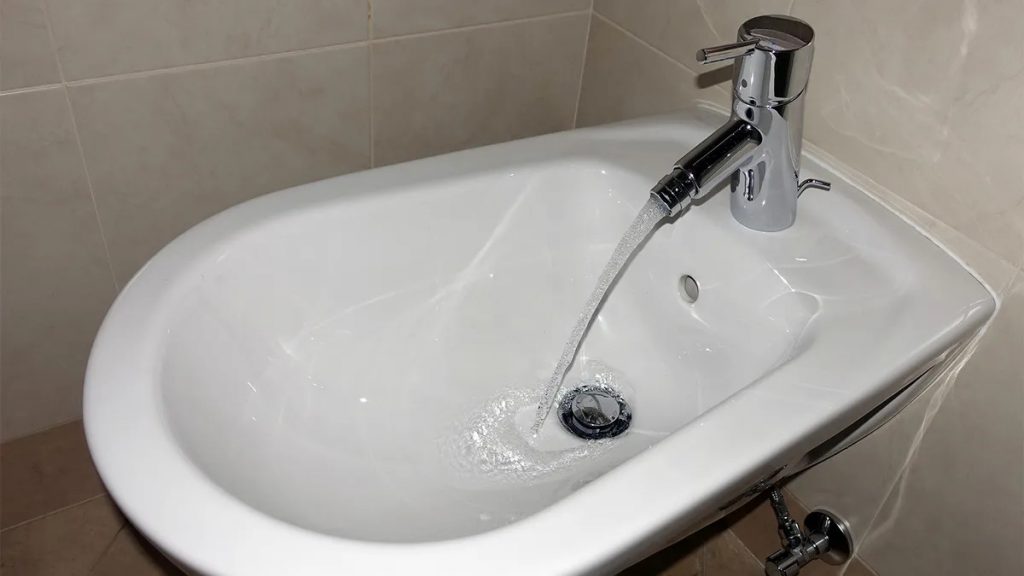Bidets have only recently been introduced to the American market, despite their growing popularity elsewhere. Those familiar with European culture are probably familiar with the solitary bidet, the oldest and most widely used type of bidet. A standalone bidet is placed next to the toilet so that you can easily clean up after using the restroom and the bidet.
Because a bidet resembles a shorter sink in the shape of a bowl, many people who have never used one before may be confused about how to use it properly. You can learn more about how to use a standalone bidet with this helpful guide!

What Is a Standalone Bidet?
If you want a bidet that does not need to be plumbed into your toilet bowl, you can get a freestanding model that you can place right next to your toilet. These bidets are known as standalone bidets.
Standalone bidets are available in two configurations: mounted on the wall or laid out flat. Its bowl is shaped like a traditional toilet, as are its seat and lid, but there are some significant differences. The bidet’s spout is fed by household water, but the appliance boosts the water pressure.
How to Use a Standalone Bidet
The process for using a bidet is essentially the same across the various types of bidets, with some minor variations in using solitary bidets. How it all works is as follows:
Use the toilet
Make sure you start by using the restroom. You should use the toilet paper to wipe yourself down at least once after using the restroom before going to the bidet. This way, you won’t have to worry about clogged drains caused by too many feces being washed down the bidet.
Find and use the bidet
You can use a bidet in either direction on a standard, wall-mounted unit. Straddling the bidet and turning your back to the water source is another option. While in this position, you’ll have easy access to the controls, which typically means you’ll have to take your pants down, too.
People frequently sit on the controls with their backs turned as if they were on a toilet. What part of your body you’re cleaning, how the water spout is angled, and the bidet design is all relevant considerations.
Turn on the bidet
Once you’ve settled into the bidet’s seat, press the WASH button on the side to begin using it. The bidet’s nozzle extends out when you click this button, washing your behind before retracting when you hit the STOP button. Not all bidets have a retractable bidet. However, all of them have a nozzle for cleaning privates.
To use the bidet effectively, you must ensure the water is at the proper temperature before using it, and do this before you even let the water touch your skin.
Clean yourself
Before cleaning the area, check the temperature with your hand. You may either sit there and let the water spray clean you, or you can use your hands just as you would in the shower or the tub. It’s possible to use soap, although it’s not always required.
Dry your hands
Turn off the water and dry off with some toilet paper when you’re done. Put the used toilet paper in the trash can or the stall next. Put bidet paper down the toilet instead of flushing it. There will often be a towel hanging near the bidet, and use this towel just for drying your hands.
Rinse The Bidet
If you want to ensure the bidet is ready for the next user when you’re done, you can rinse it by directing a water jet at the sides and portions of the bidet. If you keep the water running after you use it, you’re being wasteful. Put yourself in the shoes of the person who will use the bidet after you, and ensure it’s in good enough shape that you’d want to use it.
Must read: How To Use A Bidet
The Benefits of a Standalone Bidet
Enhanced hygiene
Unlike toilet paper, bidets are superior at eliminating germs, bacteria, and other residues. The potential for infection after inappropriate wiping is reduced. The use of a bidet can lessen post-shower skin irritation and body odor.
The use of a hands-free bidet can also aid in preventing the transmission of disease. Those more likely not to wash their hands after using the restroom may benefit most from this.
Less waste
The typical American uses one toilet paper daily, while three rolls are needed weekly. This has serious consequences for forests around the world.
With a standalone bidet, you may reduce your toilet paper consumption significantly. The answer to the question, “Is a bidet really necessary?” is yes. The usage of a bidet can benefit both your family and the planet.
Towels and toilet paper are two areas where household budgets might be trimmed. We can do many simple things to help the environment, and installing water-saving toilets is one of them; they also help cut down on wasteful water use and costly energy costs.
Increasing bathroom independence
It’s possible that those who are overweight or have mobility issues would find it easier to use a bidet than to wipe. With a bidet, the user doesn’t have to do anything to become clean (including drying off), which is great news for anyone who requires extra space and independence while using the restroom.
Long-Term savings
An up-front bidet cost may be prohibitive, but in the long run, having a bidet will be money well spent. Even after installing a bidet, you may choose to use toilet paper if you choose.
However, if you start now and save up for toilet paper, you’ll have a tonne of the fund left over at the end of the year. When you add up how much money you were able to save, you will be astounded, and it’s likely to be more than you spent on the bidet itself.
Conclusion
The convenience of a bidet that stands on its own is invaluable for those who have difficulty moving around. They have a lower environmental impact than tree-based tissue paper. Knowing how to use a standalone bidet is beneficial for your health and environment.
Bidets typically use water rather than tissues and are unlikely to cause toilet blockages. Standalone bidets have numerous advantages but can be intimidating to those who have never used one.
To begin, you’ll need to use relatively low pressures, and you’ll eventually realize that you can’t imagine life without the conveniences provided by a standalone bidet.
